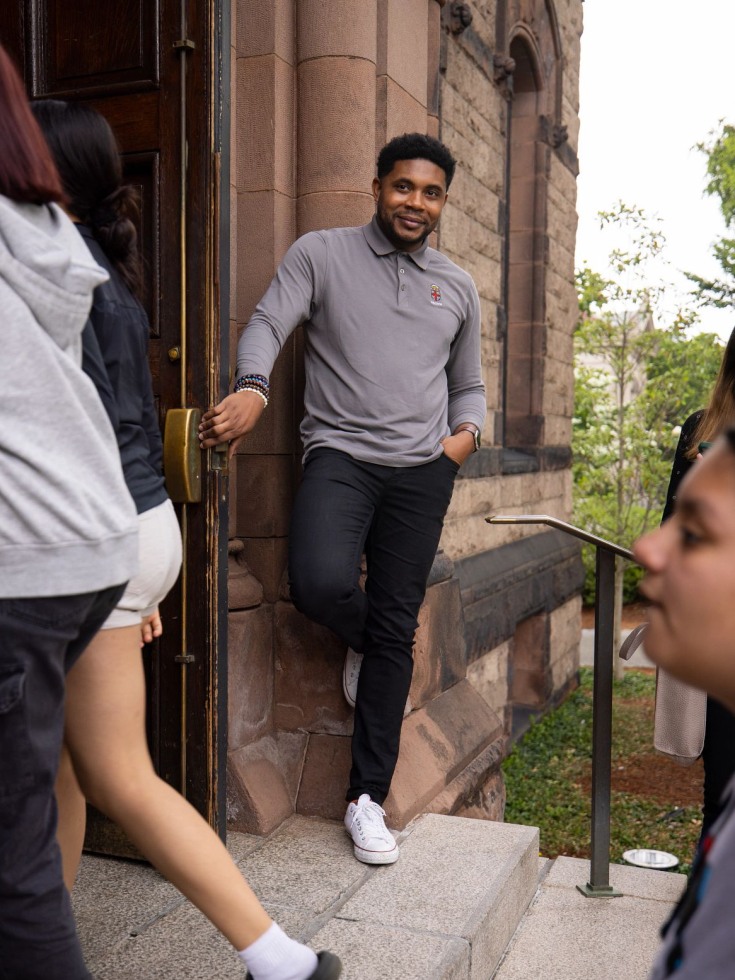PROVIDENCE, R.I. [Brown University] — Middle school can be tough: new social circles, new teachers, new hormones. Many adults look back ruefully on those years, wishing they could have improved the experience.
On Thursday, June 8, 120 eighth-grade students from Providence’s Nathanael Greene Middle School got the chance to do just that.
With assistance from Brown University faculty, students and staff, the middle schoolers spent a day away from the classroom deciding how to spend $100,000 from Brown’s Fund for the Education of the Children of Providence to improve Nathanael Greene and other schools in the Providence Public School District. After taking part in a series of small-group exercises, discussions and voting exercises, the students agreed to spend the funds to boost hands-on learning.
“I think it’s easier to learn something by doing it yourself, instead of just listening in class,” said Jaisen Galvan, an eighth-grade student at Nathanael Greene, in a small discussion with a dozen of his peers. “When you have to figure it out for yourself, it sticks.”
The daylong event at Sayles Hall, called Power to the Pupil, was the brainchild of Jonathan Collins, an assistant professor of political science, public policy and education at Brown. Last month, a Public Education Committee composed of Providence and Brown community members, including state and district educators, voted unanimously to support Collins’ project, along with another project focused on strengthening high school libraries with payouts from the Fund.
“We’re going to turn your ideas into real, practical investments into the school district,” Collins explained to the room full of students. “This is your chance to be a part of something really special.”





